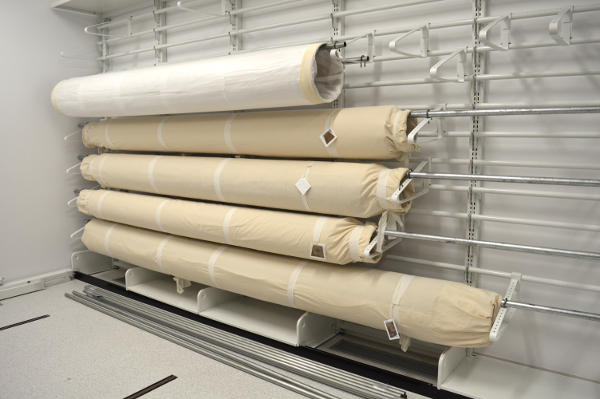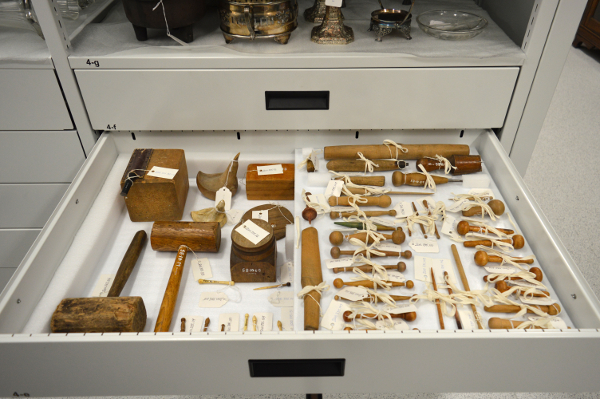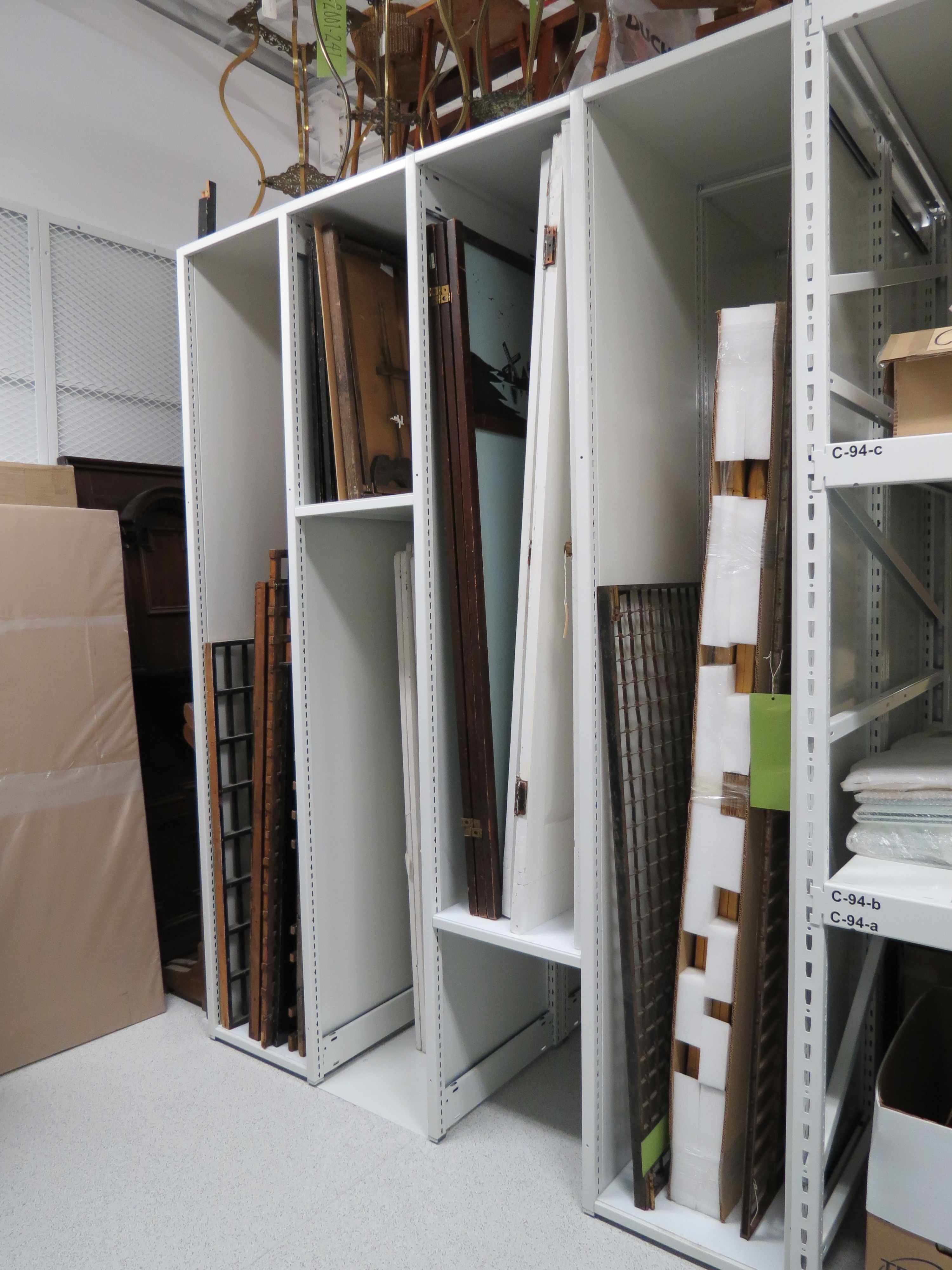Improved infrastructure at the Monastère’s Museum Storage Facility
In recent months, the Monastère des Augustines’ Museum storage facility has improved. With financial assistance from the Department of Canadian Heritage’s Museums Assistance Program, the collections team has been able to obtain specialized equipment to better preserve stored objects.
The purchase of a wall structure for rolled storage of large textiles enables the collections team to properly store carpets, funeral palls, tapestries, etc. Also, the preservation of large elements, such as cloister grids, screens, bed frames, stained glass windows, consoles is ensured by the addition of a vertical structure with lockers that are adapted to two-dimensional objects.

A wall structure for rolled storage of large textiles.
The acquisition of additional shelves for the mobile storage unit optimizes storage space for smaller items. Thanks to these improvements, we can continue the grouping of the collections of the Augustinian sisters from the Hôtel-Dieu de Chicoutimi and Hôtel-Dieu de Roberval monasteries. More than 2,500 objects from the Hôtel-Dieu of Chicoutimi monastery and 479 from the Hôtel-Dieu de Roberval monastery are already in the Monastère des Augustines’ Museum storage facility.

The acquisition of additional shelves for the mobile storage unit optimizes storage space for smaller items.
The project has had a direct impact on the conservation conditions of certain objects and especially helped to optimize available space in the Monastère des Augustines’ Museum storage facility. As soon as the main structures were installed, considerable space was made available, thereby improving the storage conditions for other objects, which had been crowded up until then, and providing more work space for collections processing.

An example of a vertical storage structure.
Throughout the project, the collections team welcomed visitors and researchers from institutions dedicated to conservation and museology as well as religious communities.
The acquisition of suitable structures has also been a source of ideas for other phases of future improvements. This goes to show that museum collections preservation work is never finished!

